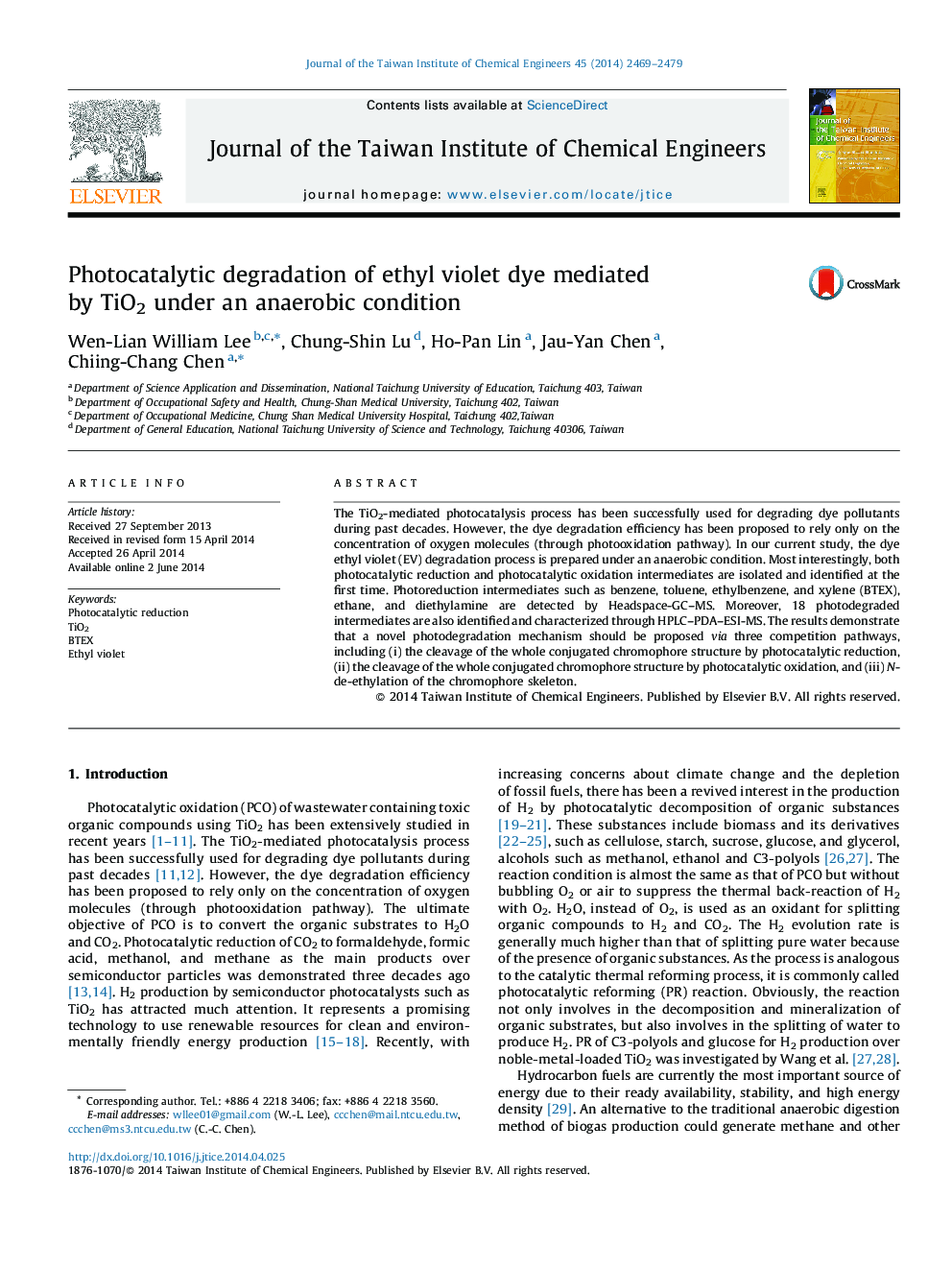| Article ID | Journal | Published Year | Pages | File Type |
|---|---|---|---|---|
| 691511 | Journal of the Taiwan Institute of Chemical Engineers | 2014 | 11 Pages |
•We investigated the photocatalytic reactions of EV over TiO2, in which BTEX were found by GC–MS.•Eighteen components were identified by HPLC–MS, all with retention time of less than 55 min.•PCR and PR appear to play an important role in the generation of BTEX.•The PCR and PR of EV for the production of BTEX have never been studied.•Based on our results, we propose a possible mechanism to explain the photocatalytic process.
The TiO2-mediated photocatalysis process has been successfully used for degrading dye pollutants during past decades. However, the dye degradation efficiency has been proposed to rely only on the concentration of oxygen molecules (through photooxidation pathway). In our current study, the dye ethyl violet (EV) degradation process is prepared under an anaerobic condition. Most interestingly, both photocatalytic reduction and photocatalytic oxidation intermediates are isolated and identified at the first time. Photoreduction intermediates such as benzene, toluene, ethylbenzene, and xylene (BTEX), ethane, and diethylamine are detected by Headspace-GC–MS. Moreover, 18 photodegraded intermediates are also identified and characterized through HPLC–PDA–ESI-MS. The results demonstrate that a novel photodegradation mechanism should be proposed via three competition pathways, including (i) the cleavage of the whole conjugated chromophore structure by photocatalytic reduction, (ii) the cleavage of the whole conjugated chromophore structure by photocatalytic oxidation, and (iii) N-de-ethylation of the chromophore skeleton.
